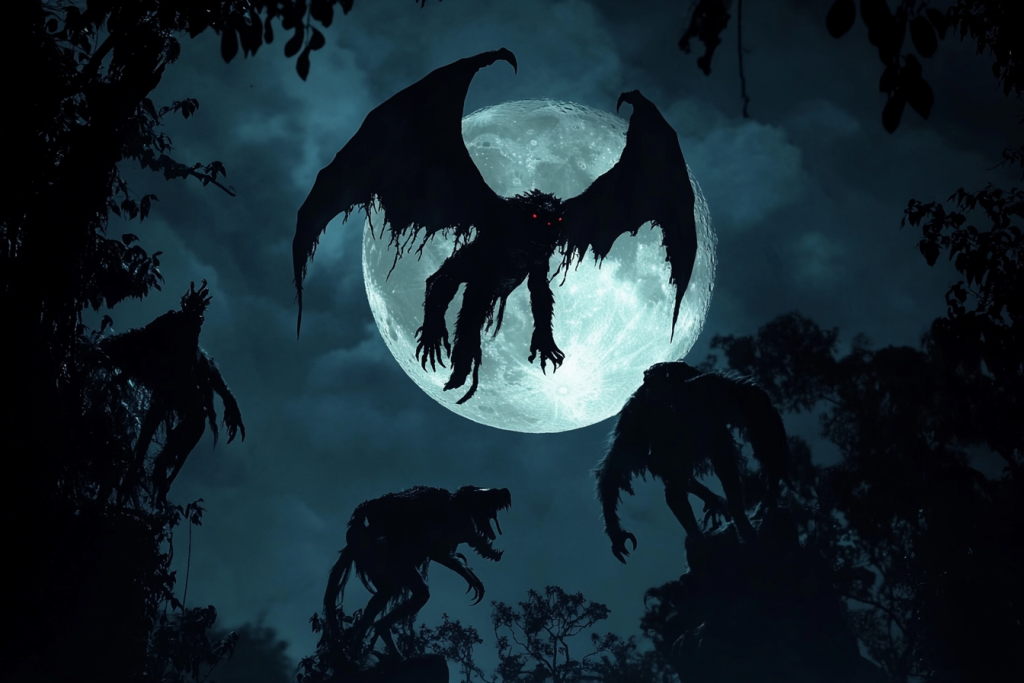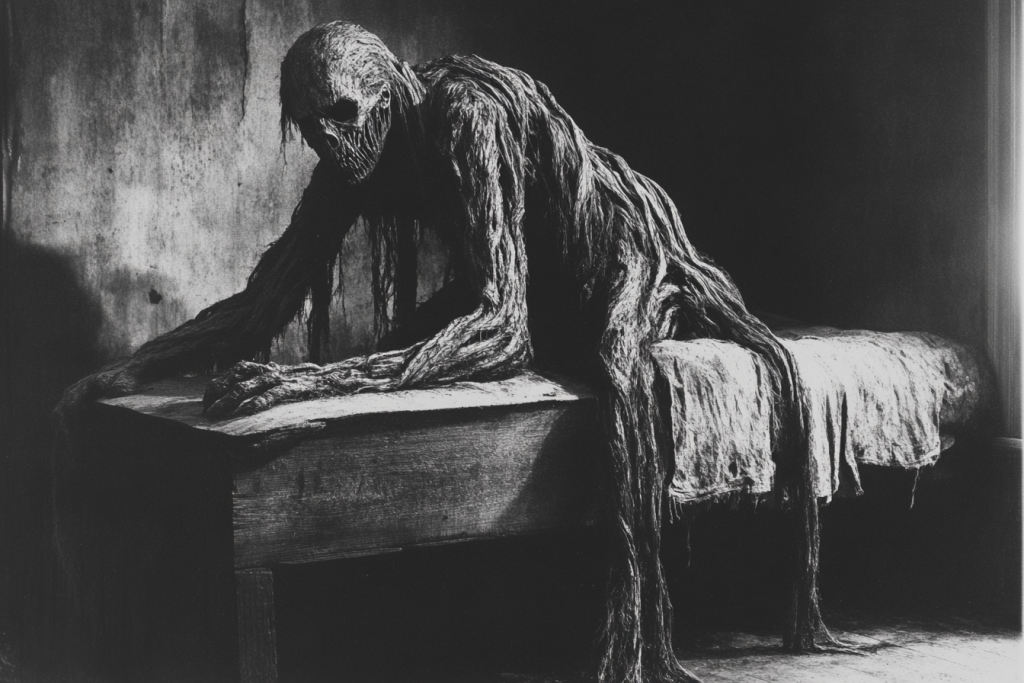The Philippines is a country rich in unique cultural traditions and oral history. Although the country itself was officially formed about 125 years ago, the area has been home to thousands of independent tribes for more than 30,000 years.
These ancient tribes lived on the 7000 islands of the Philippines. Many of these islands were far from each other, so the tribes that settled in these places lived in relative isolation and away from significant external influence. This allowed them to develop their unique mythology and traditional beliefs.
What we now know as Philippine mythology is a collection of thousands of myths and stories from these relatively independent tribes.
Major contributing tribes to Philippine mythology include the Tagalog, Visayan, Bagobo, Ilocano, Bikolano, Manobo, and Ifugao.
Read Also: Legend of the WakWak: Vampire bird in Philippine Mythology.
Popular Creation Stories In Philippine Mythology
Given the cultural diversity in the Philippines, it’s no surprise that the creation myths vary widely among regions. However, there are specific creation stories stand out and are believed by a large percentage of the Filipino population today.
Visayan Creation Story

The Visayan people were among the first tribes to settle in the Philippine Islands about 30,000 years ago. Today, they number about 20 million people and are the largest tribe in the Philippines.
According to Visayan Mythology, the world initially consisted of water covering the earth and the Sky above it. Kaptan, the primordial sky god, ruled the Sky, while Magwayen ruled the sea on earth.
These two deities married, and their union produced three sons and one daughter. Their sons were Likalibutan, Liadlao, and Libulan, while the daughter was Lisuga. The four children were made from different natural elements that determined their character.
Likalibutan’s body was made of stone, and he was strong and brave. Liadlao’s body was made from gold, and he was always happy. Libulan’s body was made of copper, and he was very timid. Lisuga’s body was made of copper and was charming and kind.
Likalibutan’s Pride and Destruction
Kaptan and Magwayen gods took perfect care of their children and protected them from evil. However, Likalibutan soon became prideful and jealous. He wanted more power for himself, and he convinced his other brothers to join him in an attack on their father.
When the three brothers arrived at the heavenly gates, they found Kaptan’s power irresistible and fled in terror. But it was too late. Kaptan was angry at the disrespect, and he sent three lightning bolts after his three sons.
The first son to get struck by the bolts was Lubulan, and he immediately turned into the moon.
Next, Liadlao was struck, and he became the sun. Finally, the prideful Likalibutan was hit, and his body was shattered into a thousand pieces, which fell into the sea and became land.
Lisuga, the only daughter of Kaptan, did not join in the attack; however, as she approached heaven to look for her brothers, Kaptan, still blind rage struck her with lightning, and her body shattered into pieces, which became the stars.
The First Men
After the rebellious children were destroyed, Kaptan gave Magwayen a seed to plant on the newly formed land. This was done, and soon, the bamboo tree started to grow.
After some time, the tree split, and the first Man and Woman emerged from its hollow branches. They were called Sicalac and Sicabay. The man and woman got married and gave birth to three children: Libo, Samman, and Pandugan.
The arrogance of Pandugan and the Creation of all Races

Pandugan, the youngest son of the first man, also gave birth to a son whom he called Arion. He was very intelligent and clever. Using Bamboo and other materials, he made helpful tools that people used to hunt, cook, and farm.
One day, Pandugan created a fish trap from bamboo trees and took it to the sea. The first animal he caught was a giant shark. The shark was so magnificent and huge that Pandugan declared it a god and ordered everyone to worship it.
Soon, Kaptan came from the Sky and told Pandugan to throw the shark back into the water. Pandugan refused this order and declared that the animal was indeed as big as a god. Since he had been able to capture it, he believed he could also capture and defeat any god he faced.
To teach the rebellious mortal a lesson, Kaptan struck him with a small Lightning bolt. Although this attack did not kill Pandugan, his skin turned black. He is considered to be the ancestor of everyone with black skin.
Kaptan knew the humans would bring more trouble if they stayed together, so he separated them.
Some were carried to the south, where the sun was so hot that it turned their skin brown. These people became the ancestors of all brown-skinned people.
Some others were carried to the east, where there was very little food. To survive, these people ate clay, which turned their skin yellow.
Arion-Pangalu’s son was taken to the north, which had good weather and plenty of food. His skin did not lose colour, so he and all his descendants maintained their white colour.
The Story of Malakas and Maganda
Another prominent creation story from the Philippines comes from the Tagalog people. Like the Visayan creation story, the Tagalog also believed that the first man and woman emerged from bamboo trees. The first man was Malakas, whose name meant “Strong”, while the first woman was Maganda, which means “Beautiful.”
The story begins with a great bird that was flying across the ocean, searching for a place to rest. It spotted a single bamboo stalk floating on the water. Curious, the bird pecked at the Bamboo, causing it to split open.
From the Bamboo emerged Malakas and Maganda, the first man and woman fully formed and ready to populate the earth. Bathala, the supreme Tagalog deity, had hidden them inside the Bamboo, awaiting the right moment to release them into the world.
Malakas, in this creation story, symbolizes strength and the physical power to shape the world, while Maganda represents beauty, grace, and the nurturing aspect of life. Together, they complement each other, much like the land and sea in the Visayan myth.
Bamboo In Philippine Mythology

As you may have noticed, Bamboo is a recurring element in the creation stories of the Filipino people. This is no coincidence.
The bamboo plant was crucial to the survival of ancient Filipino tribes. It was used to construct traditional Bahay Kubo houses, make ropes, build boats, and create local weapons.
The versatile nature and usefulness of this plant for ancient Filipino communities led it to be seen as a life-giving plant that is deeply integrated into their creation myths.
Read Also: Carnivorous Water Horses in Scottish Mythology
Gods and Goddess in the Philippine Mythology
Each ethnic group in the Philippines has its unique pantheon. Some believe in a supreme deity, while others are more animistic and worship ancestors and spirits of the natural world.
Some of the most popular gods and goddesses in Philippine mythology are listed below.
Bathala

The supreme god of the Tagalog people, Bathala, is the creator of the universe and all living things. He is regarded as the all-powerful figure who watches over the world.
Bathala lives in Kaluwalhatian with other lesser deities and often sends his anito to help humans with their problems.
Due to his ever-loving nature, he has been synchronized with the Christian God by the Spanish missionaries.
Mayari
Mayari is one of Bathala’s three daughters, along with her two sisters, Tala and Hanan. She is worshipped as the goddess of the moon and beauty. Mayari is associated with revolutions, war, rebellions, weapons, and strength.
In the Tagalog stories, she lost an eye in a battle with her brother Apolaki. Although she continued to shine, her light was dimmer than before, and she became the moon.
Apolaki

Apolaki is the god of the sun and war. He is the son of Bathala. According to Tagalog mythology, when Bathala was asleep, Apolaki challenged her sister for control over the sun. He won after an intense battle.
Apolaki also represents leadership and strength.
Kaptan
In Visayan mythology, Kaptan is the primordial deity of the Sky that rules over the whole world. Unlike Bathala, Kaptan is a vengeful and jealous god.
Kaptan is also credited with creating the first bamboo tree from which the first man and woman emerged.
Magwayen
Like Kaptan, Magwayen is also a primordial deity that rules over the sea. In some stories, Mahwayen falls in love with Kaptan and marries him. She later gave birth to the first generation of deities. Magwayen also serves as a ferryman of souls to the afterlife.
Lihangin

Lihangin is the god of the winds in Tagalog mythology. Although he is considered one of the lesser deities, he is still greatly revered, as his influence over the wind and weather was crucial to the survival of crops and farm animals.
Magbabaya
Magababaya is the supreme deity of the Talaandig people of the Philippines. He is believed to be a great spirit who lives in a house of coins. The god is said to be so powerful that no one can look at him and live.
Anyone who dares to look at the face of the great Magbabaya will melt into water.
Creatures in Philippine Mythology
Like the deities, Philippine mythology features thousands of creatures. These mythical creatures can be classified as monsters, beasts, spirits, and objects reanimated with negative energy.
Many of the mythical creatures from the Philippines are evil and are often associated with the deep, dark and mysterious parts of the forest. Others blend in with human communities. Creatures in Philippine mythology are also believed to have special powers that make them more difficult to deal with.
Some of these mythical creatures are listed below
Aswang

This is probably the most popular and feared mythical creature in the Philippines. The term Aswang is an umbrella name used to describe several shape-shifting creatures that feed on human blood and internal organs.
The different types of Aswangs are;
The Waredog
These are similar to the werewolves in European mythology. At night, they transform into vicious dogs and hunt people. They are particularly attracted to pregnant women.
The Witch
These are mysterious women that live outside human communities. They are known to practice dark magic and can place terrible curses on anyone who crosses their paths.
The Vampire
These types of Aswang often take the form of beautiful human women. They live in the forest but often mix with the human communities.
Vampires in Philippine mythology have long tongues which they use the suck the blood of their victims.
The Corpse-eating Aswang
These are foul-smelling monsters that feed on human corpses. They have very strong teeth and nails and live away from human communities.
The Mananangal
These types of Aswang have a unique ability to detach their upper body from the lower half and turn their hands into bat-like wings. Like the vampire, the Mananangal also disguises itself as a beautiful woman to live in human communities. They come out at night to hunt.
The WakWak is another creature similar to the Mananangal; however, it can not detach its torse from its lower body like the Mananangal.
Tikbalang
This half-horse, half-human creature lives in the deep, dark forest of the Philippines. It is a prankster that loves leading travellers astray and causing them to walk in circles until they are exhausted. To avoid this horrid monster, travellers are advised to wear their shirts inside out and to wear protective armlets.
Diwata
The Diwata are forest spirits that can be compared to fairies in Western mythology. They protect the forest, rivers and other natural elements from abuse and misuse. They are usually benevolent but can become vengeful if their natural domains are disrespected.
WakWak
The WakWak is a bird-like vampire monster that preys on humans at night. The unique name of the creature comes from the “wakwak” sound it makes as it flies. This sound gets softer as it approaches its victim.
The WakWak is similar to the Mananaggal; however, it is unable to detach its lower torso during its night hunts. Like the ware dog, the WakeWak prefers to prey on pregnant women, ripping out their hearts.
Kapre

A giant humanoid monster that lives in massive forest trees such as acacias, Bamboo, and mango trees. The Kapre is known for smoking cigars and tricking travellers in the forest.
It wears a magical belt that it can use to turn invincible. It also carries a small white stone that could be stolen by humans and used to force the creature into granting wishes.
Bakuwana
The Bakuwana is a massive serpent dragon believed to cause natural Phenomena such as earthquakes, eclipses, heavy rains, and wind. It is believed that this monster came from an ancient sea deity who transformed after her lover dupped her.
It is believed that there were seven moons in the beginning, but the Bakunawa consumed six of these. Also, the creature’s movement was used to map the calendar system of the ancient Filipinos.
The Batibat

The Batibat is a vengeful demon from Ilocano folklore in the Philippines. It takes the form of a massive, obese woman and resides in trees. The creature is attached to these trees, and when they are cut down and used to make wooden posts for houses, the Batibat remains in the posts.
At night, she attacks those sleeping near the post by suffocating them, a phenomenon often explained as sleep paralysis. Victims feel an overwhelming weight on their chests, unable to breathe or move.
To avoid the Batibat’s wrath, people are advised not to sleep near posts made from trees or to sleep in a sitting position.
Philippine Mythology in Pop Culture
Philippine mythology has significantly influenced popular culture, both in local and international contexts. Elements from folklore, such as creatures like the Aswang, Tikbalang, and Kapre, have appeared in films, television shows, and literature, shaping horror and fantasy genres in the Philippines.
Local comics and graphic novels, like “Trese,” have brought mythical creatures into modern urban settings, blending traditional beliefs with contemporary stories.
In television and cinema, shows like “Shake, Rattle & Roll” and other horror anthologies use mythological creatures as central antagonists, keeping these stories alive in the modern era. Philippine mythology is also featured in video games, such as “Bayani,” which incorporates mythical figures into its characters. International interest has risen as well, with Filipino mythology influencing creators worldwide.
